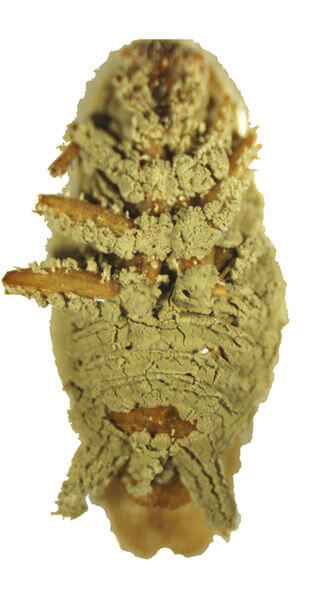Carnivorous plants capture animals in order to use the nitrogen from their bodies. A new study reveals that even ordinary plants are able to kill insects with the help of a special fungus. How does that happen?

Noam Levitan Galileo
Plants, like all organisms known to us, need nitrogen compounds to grow. Although nitrogen gas is very common in the atmosphere, and makes up 78% of its volume, plants are unable to absorb it ("fix nitrogen") directly from the air.
They absorb nitrogen compounds from the soil, but this too only thanks to nitrogen-fixing bacteria living in the soil or in symbiosis within the roots of certain plants, which fix the nitrogen in the air and turn it into compounds available to plants (nitrate or ammonia). In addition, fungi and bacteria break down organic matter in the soil, such as dead plants and animals, and turn it back into available compounds as well as free nitrogen that returns to the atmosphere.
Carnivorous plants
Carnivorous plants, such as the gorse or the nadid, which grow in places poor in nitrogen, found another way to obtain nitrogen: they capture animals, digest them, and use the nitrogen from their bodies. Scott Behie and his colleagues from Brock University in Canada discovered, in a study recently published in the scientific journal Science, that even "normal" plants are capable of killing and digesting insects. But while carnivorous plants do this using conspicuous traps, other plants hunt in secret, with the help of a fungus that participates in the killing.
Already in 2001, another group of researchers discovered, in a study published in Nature, that the white pine (Pinus strobus) is not an innocent tree, but a predator that feeds - with the help of a fungus that lives on its roots - from small insect-like arthropods called spinytails. This hunting partnership is unique to the white pine and to a certain fungus, but it prompted Bihi and his colleagues to look for other examples of cooperation between plants and fungi in hunting arthropods, such as insects.
The researchers hypothesized that the fungus, which is most likely to be part of this kind of cooperation, is of the genus Metarhizium. Soil fungi belonging to this genus are common all over the world, and are known parasites of insects, capable of infecting and killing over 200 different species of insects. They are so successful in killing that they have been adopted by man as a biological weapon against insects. In addition, many Metarhizium fungi live in symbiosis inside plant roots, so it is conceivable that they will participate in the transfer of nitrogen from insects that they kill to plants.
The hired killer
To test this, Bihi and his colleagues injected the larvae of the great dong moth (Galleria mellonella) with marked nitrogen, infected them with a fungus\ and buried them in the ground next to common bean (Phaseolus vulgaris) and virgatum millet (Panicum virgatum) plants. The researchers separated the buried larvae from the roots of the plants using a net with small holes that do not allow the growth of roots through them, but allow the growth of the fungal webs through them.
The larvae died two days after being infected with the fungus, and after 14 days the researchers found labeled nitrogen in the plant tissues. 28% of all nitrogen in beans and 32% of nitrogen in millet came from the dead larvae. Similar results were also obtained when Bihi and his colleagues did not infect the larvae with the fungus but the plants. On the other hand, when both the larvae and the plants were not infected with the fungus, or were infected with a fungus that does not form a symbiosis with plants, almost no labeled nitrogen was found in the plant tissues. According to these results, the only way nitrogen from the larvae reached the plants is through the mediation of the fungus. The fungus takes care of the insect, kills it "for" the plant, and transfers the nitrogen from the insect to the plant to which it is attached with the help of its webs. The fungus, by the way, receives carbon compounds from the plant in exchange for nitrogen.
It remains to be seen how widespread and important the phenomenon is in nature, and not under laboratory conditions, but considering that the relationship between Metarhizium and plants is widespread, it makes a lot of sense that the hidden predation of insects and other arthropods is also widespread. With the help of the fungus, plants can enjoy the advantages that carnivorous plants have, without investing in creating special lures and traps; All they need is to pay the hitwoman some carbon compounds.
for further reading:
Behie, SW, Zelisko, PM & Bidochka, MJ Endophytic insect-parasitic fungi translocate nitrogen directly from insects to plants. Science 336, 1576-1577 (2012).
For the original article click here
The full article was published in Galileo magazine, August 2012

One response
exciting!